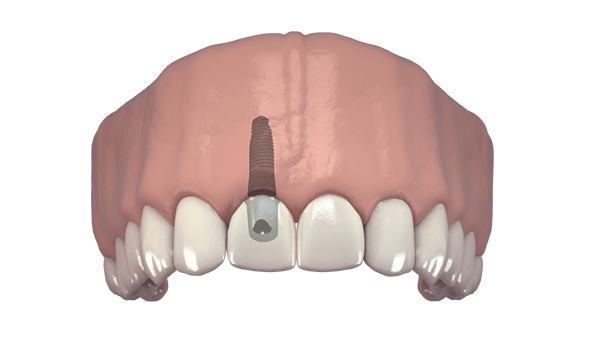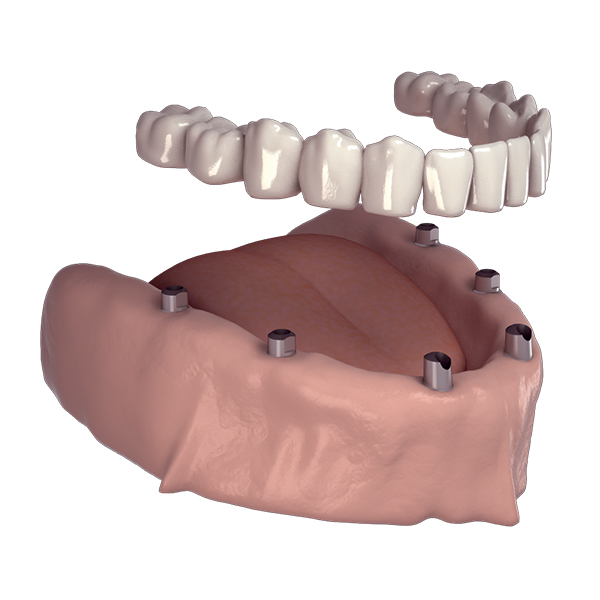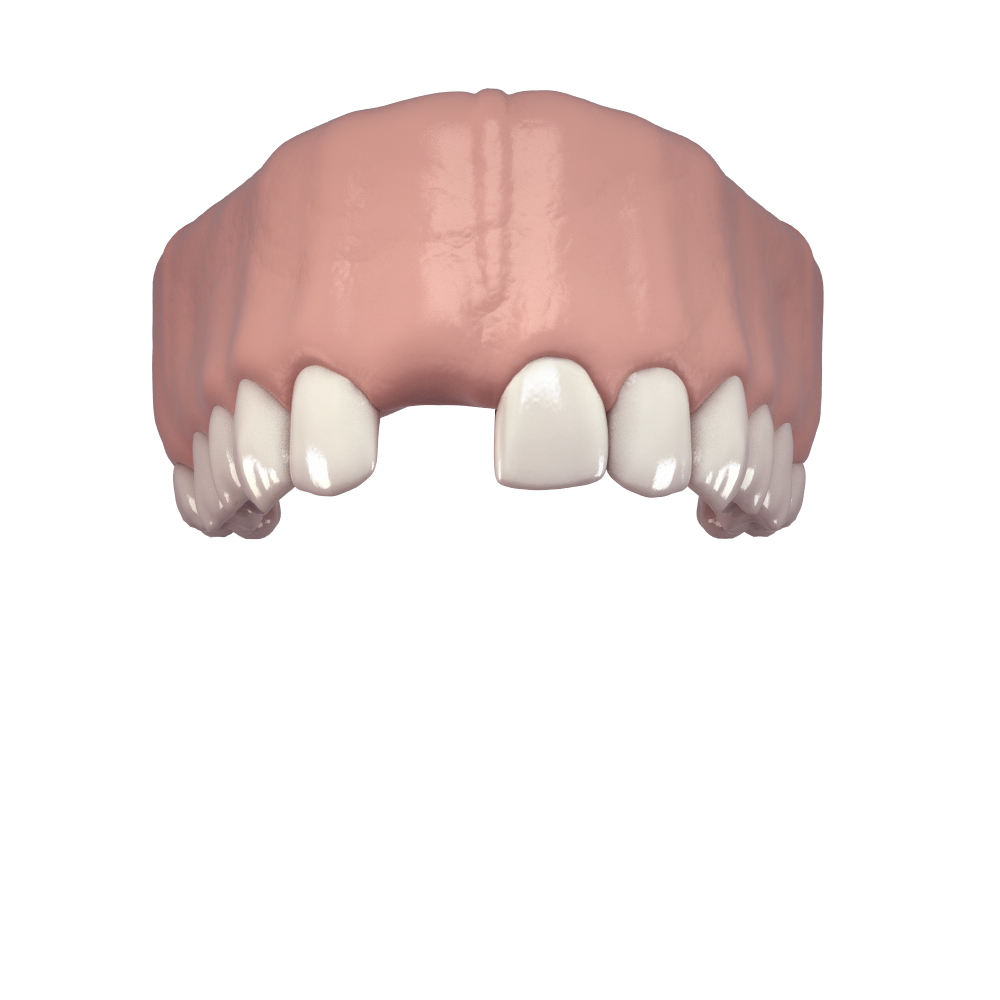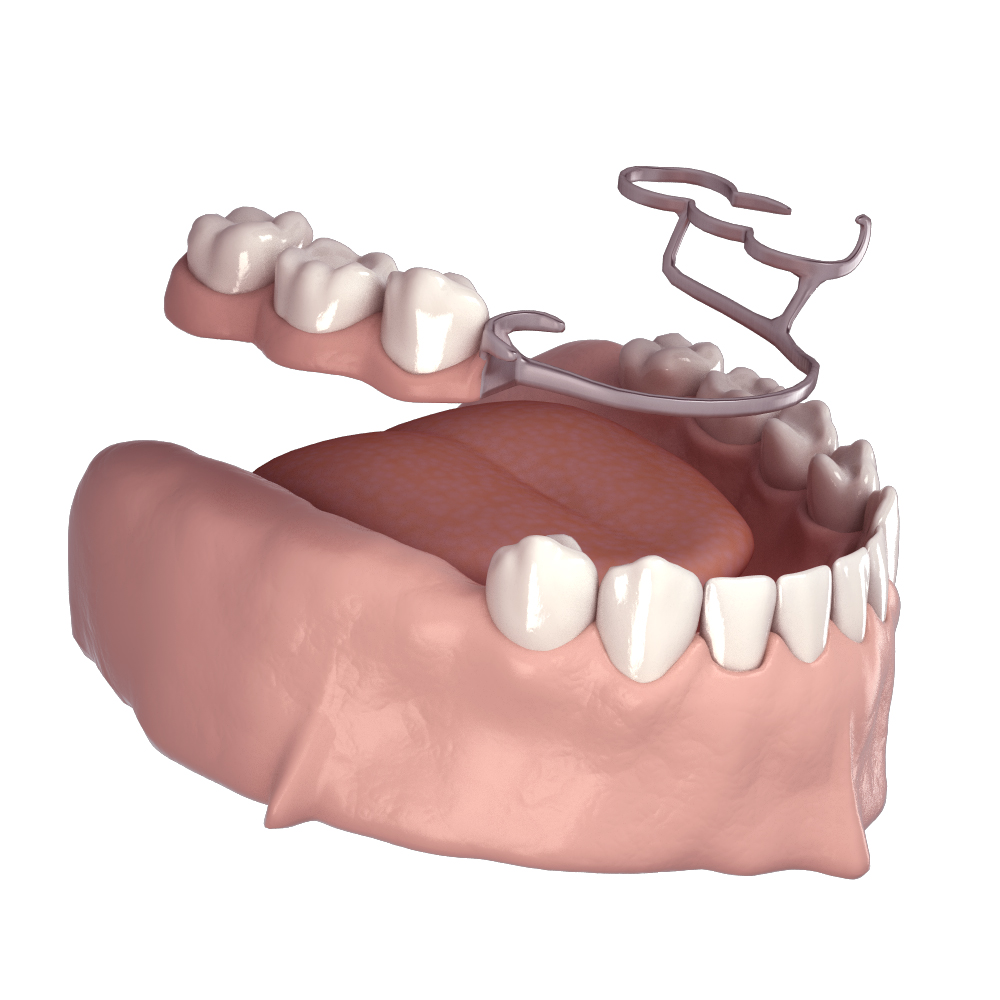FIXED PROSTHESIS
HOW CAN IMPLANTS HELP ME?
Dental implants are like pillars that act as roots, and are embedded in the bone to support a prosthetic product. This solution has been in use for numerous years, and is considered a safe and reliable means of tooth replacement. A prosthesis, which cannot be removed by the patient, is mounted on top of the implants, offering the same security and stability as one’s own natural teeth.
Implants can be used to replace single or multiple teeth. And if multiple teeth need to be replaced, an implant doesn’t necessarily have to be placed for each tooth. In fact, there are all-on-four or all-on-six solutions available, which are capable of supporting an entire arch on just 4 or 6 implants.
In order to evaluate this application possibility, a specialist must evaluate the patient’s bone volume and anatomical structure in order to prepare a consistent treatment plan that will minimise any potential complications and will ensure excellent comfort and aesthetics.


WHY SHOULDN’T MISSING TEETH BE OVERLOOKED?
Every missing tooth has a considerable impact on an individual’s health and general well-being. The negative effects are mainly felt on a psychological level, affecting the person’s social life and functionality.
These are due to the loss of the ability to chew and to maintain a complete diet, pain in the surrounding muscles and joints, and various other symptoms, including headaches and migraines.
In fact, the loss of one or more teeth can lead to jaw bone resorption, as the bone is no longer stimulated during chewing.
Over time, after the loss of one tooth, the risk of losing others increases and the volume of the residual bone gradually decreases, making the problem more difficult to resolve. In addition, the absence of one or more teeth affects the alignment and contact between adjacent teeth, as well as the mandibular joint. This leads to alterations and ageing of facial features, and even major changes in the person’s smile, which is considered an important means of communication. Fortunately, a normal life can be regained through modern dental technology, thanks to implantology.
OTHER AVAILABLE SOLUTIONS AND HOW TO EVALUATE THEM
When a single tooth is missing, the implant allows it to be replaced with a crown or prosthesis, for an effect that’s very similar to that of a natural tooth, thus eliminating the need for a bridge. The application of a bridge requires the adjacent teeth to be filed down in order to create crowns for anchoring the missing central tooth. The placement of an implant therefore allows the teeth adjacent to the missing one to be left intact, the importance of which should not be underestimated, especially if the adjacent teeth are healthy.
The placement of implants can even resolve the absence of multiple teeth, by providing support for more complex structures, and can even be a viable alternative to removable partial dentures, which are supported by adjacent anatomical structures like teeth and gums, but often require additional braces to ensure stability during chewing.



REMOVABLE PROSTHESIS
Implantology can stabilize the removable prosthesis, improving the quality of life.
